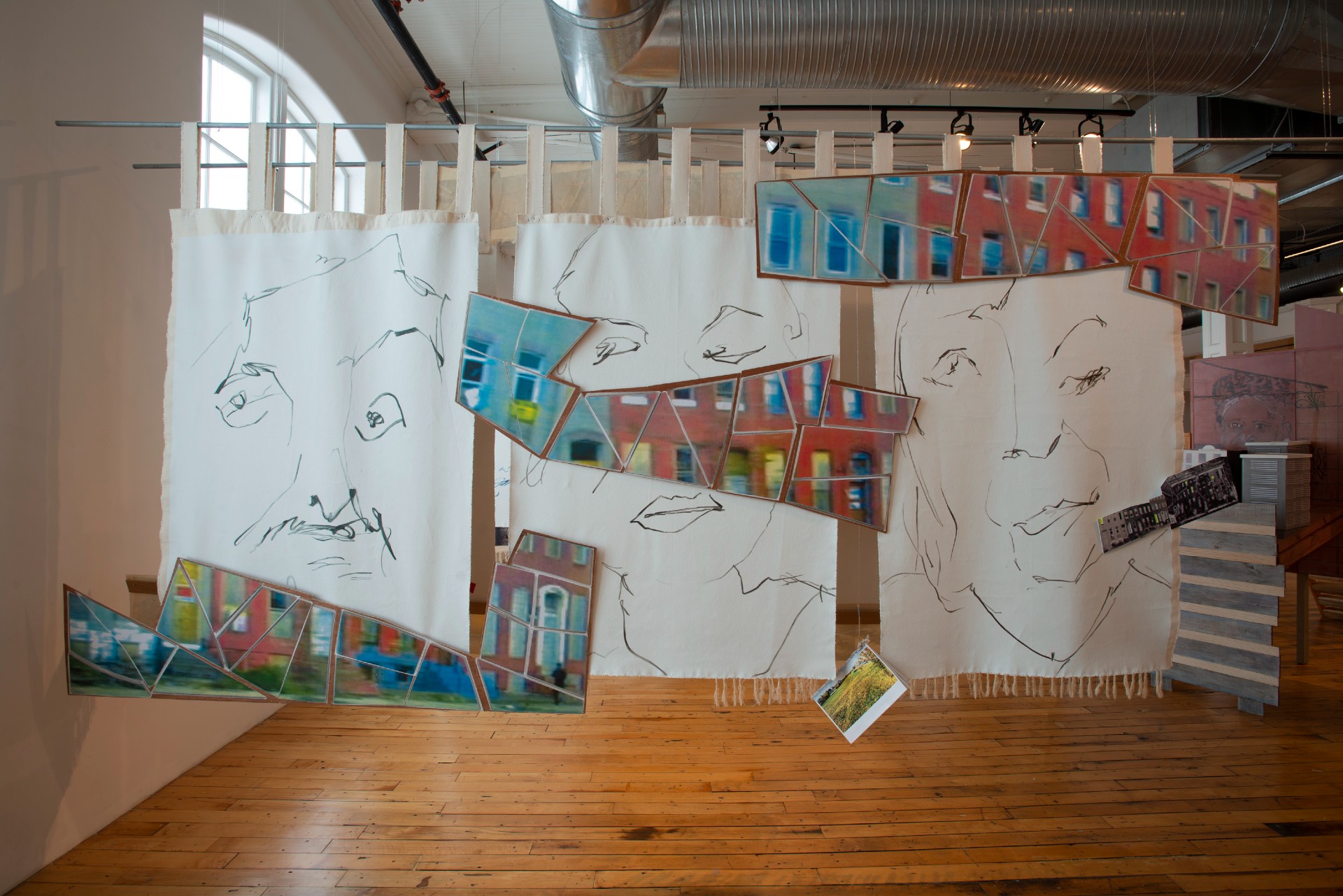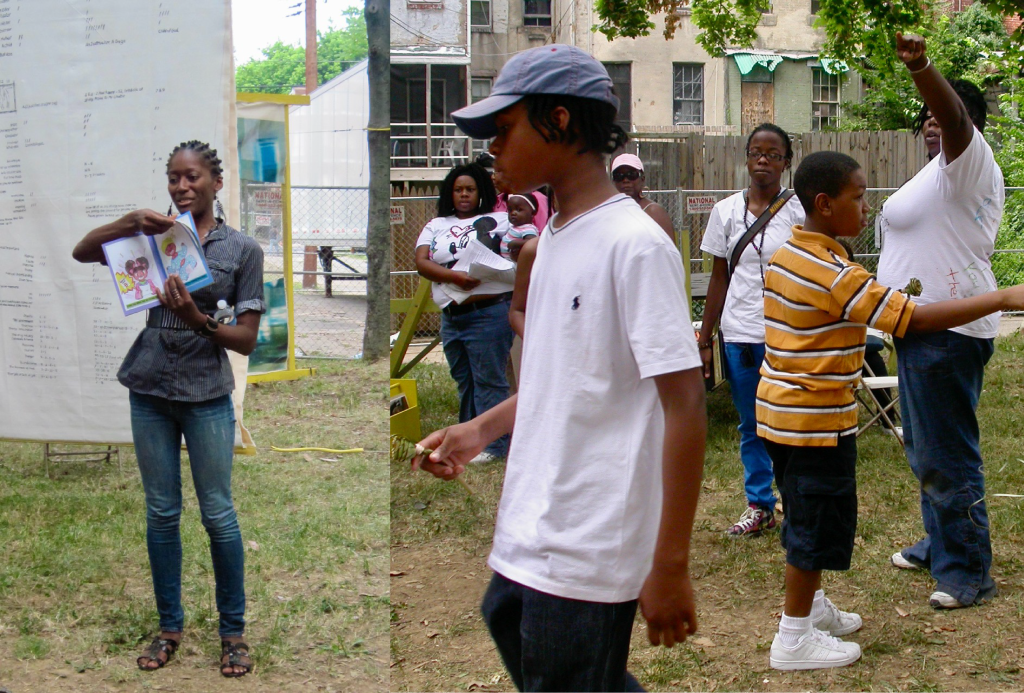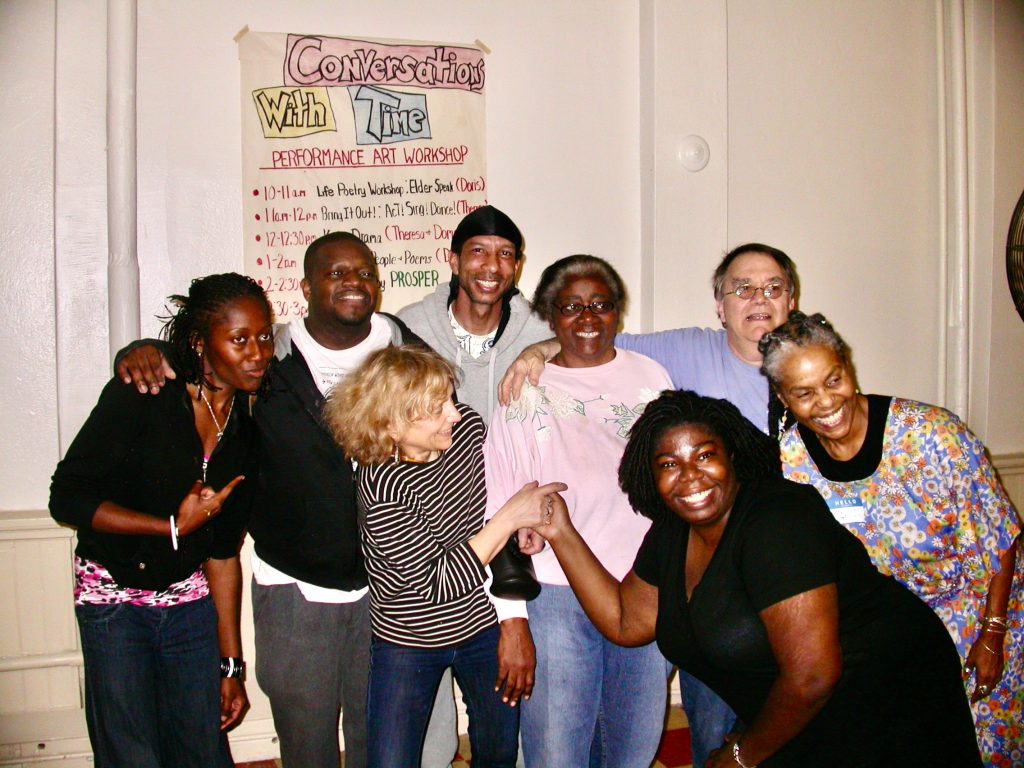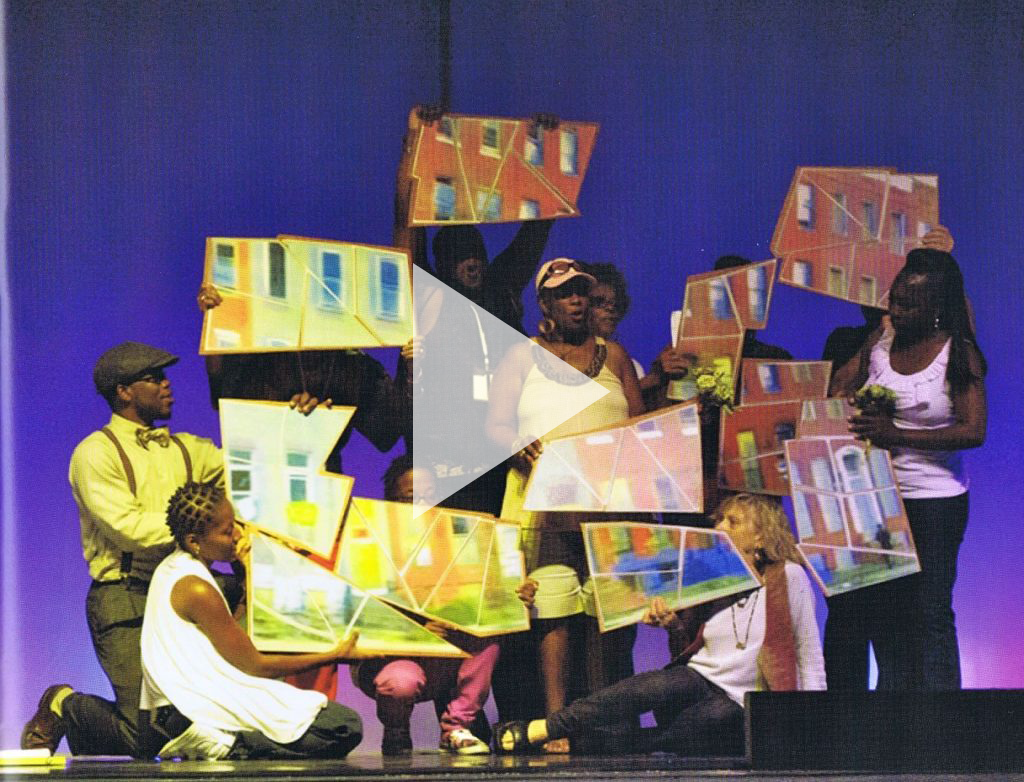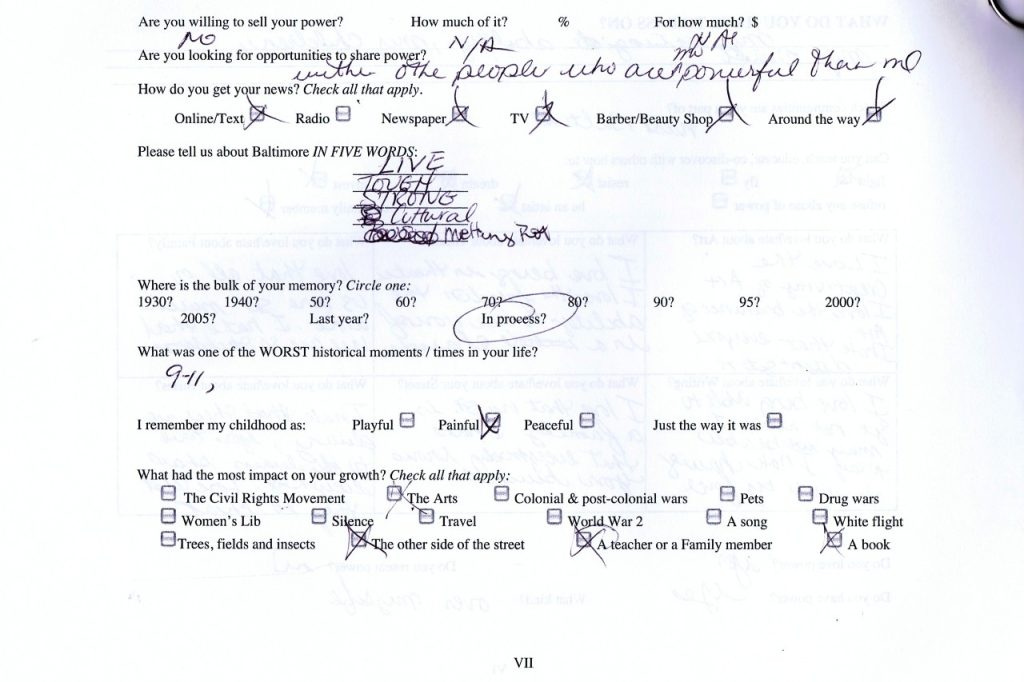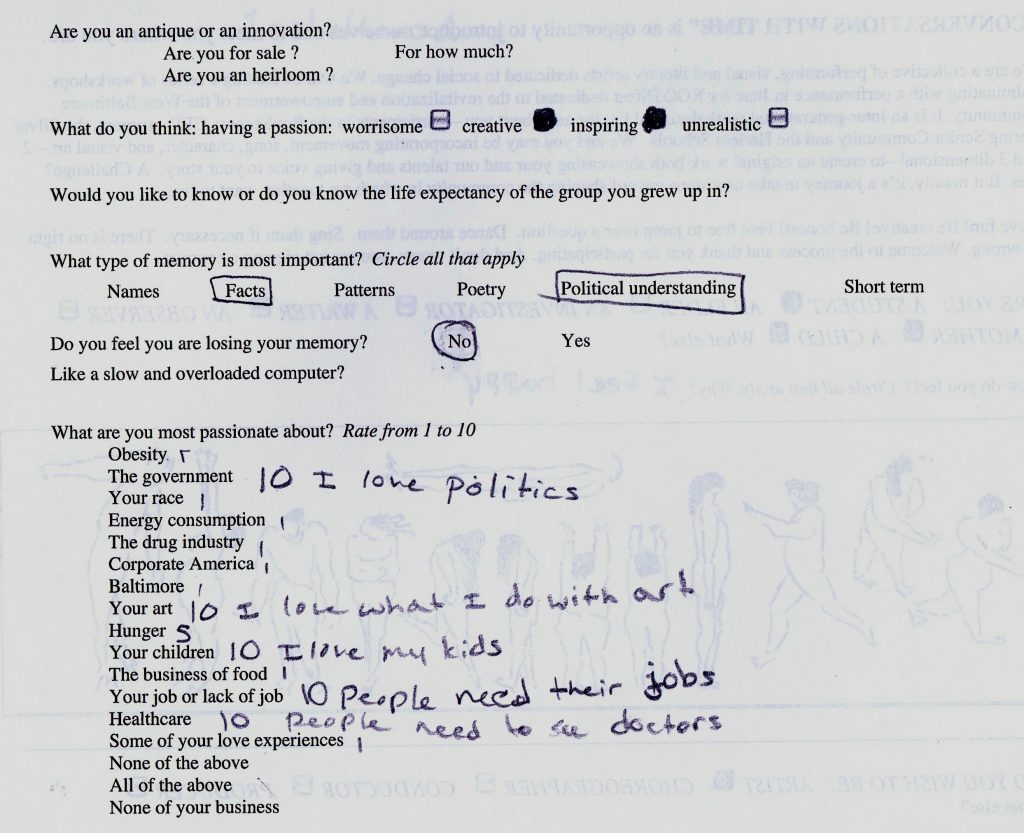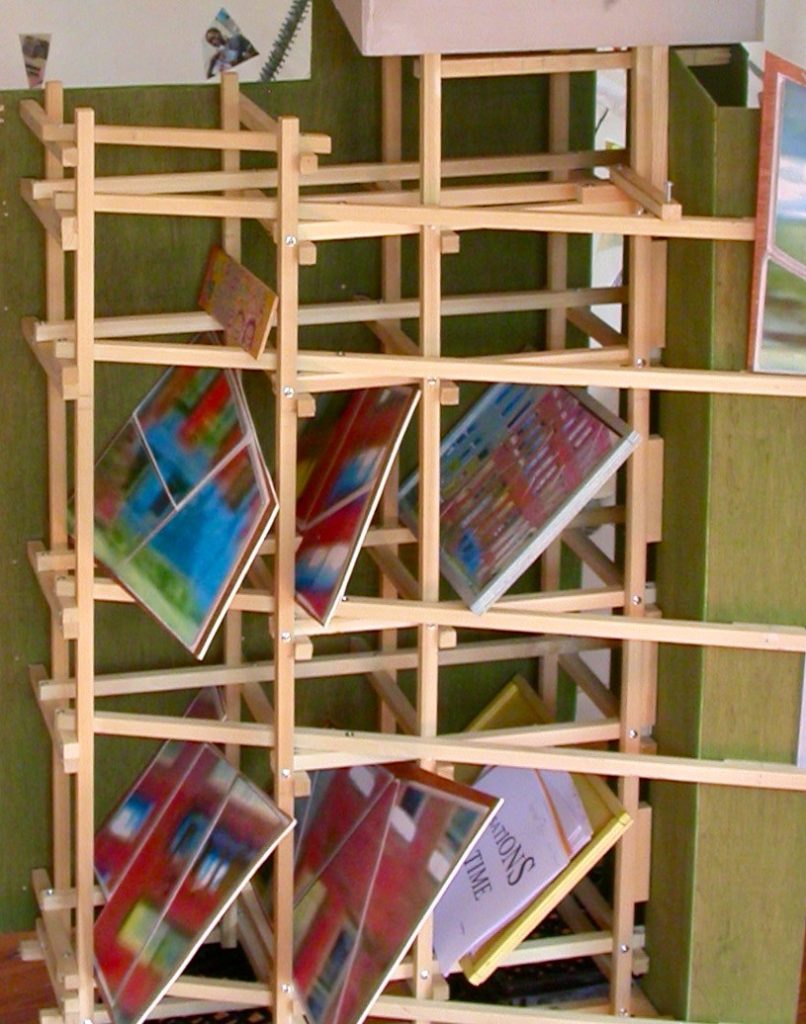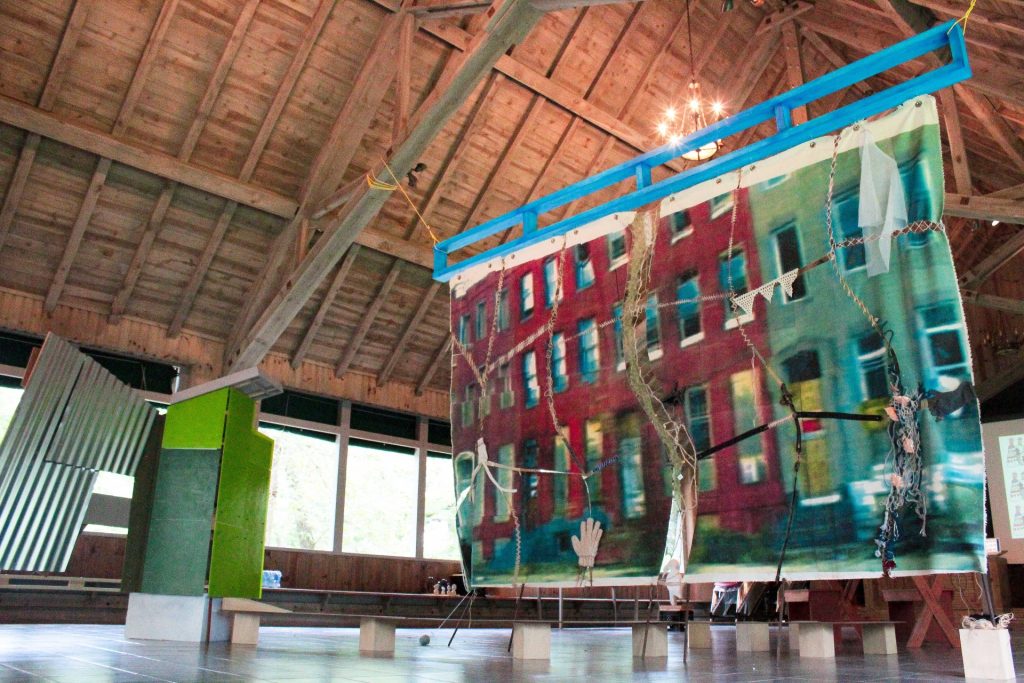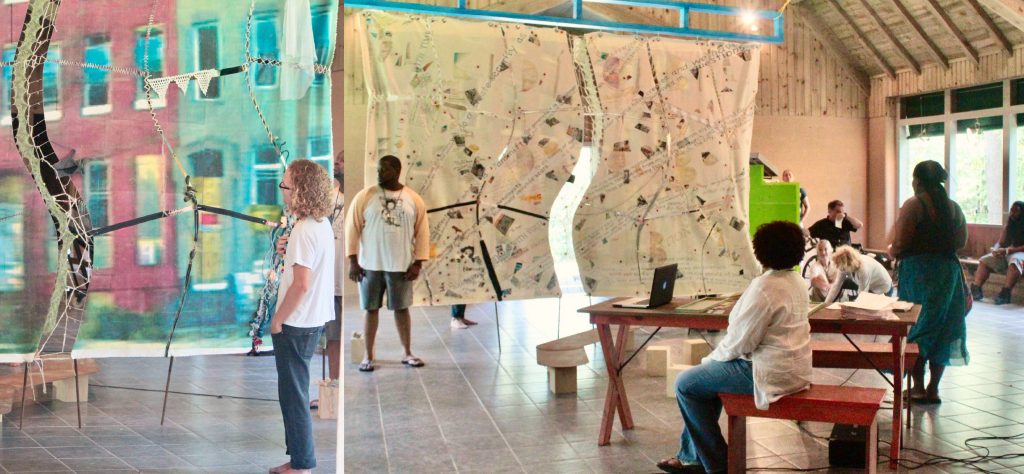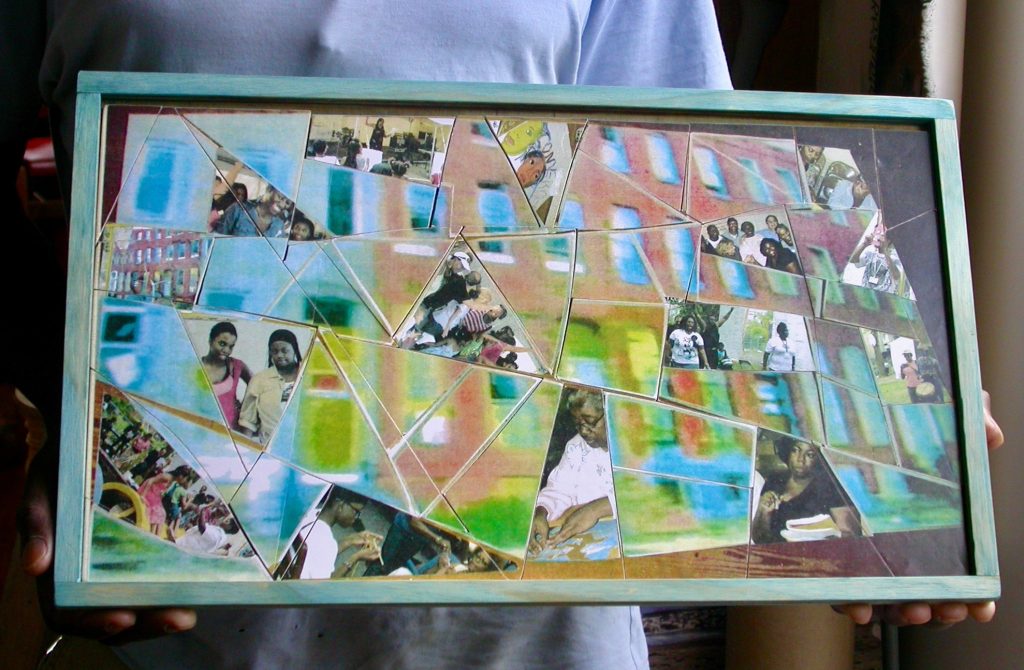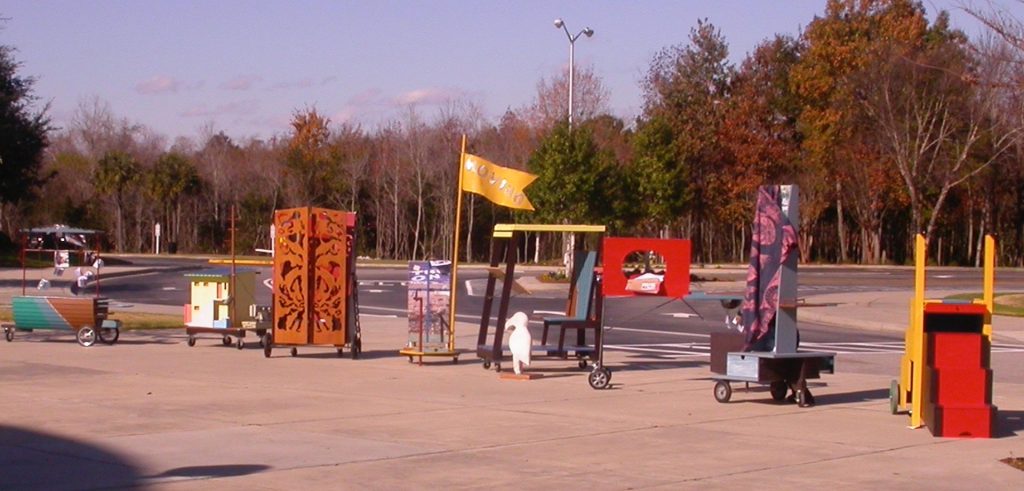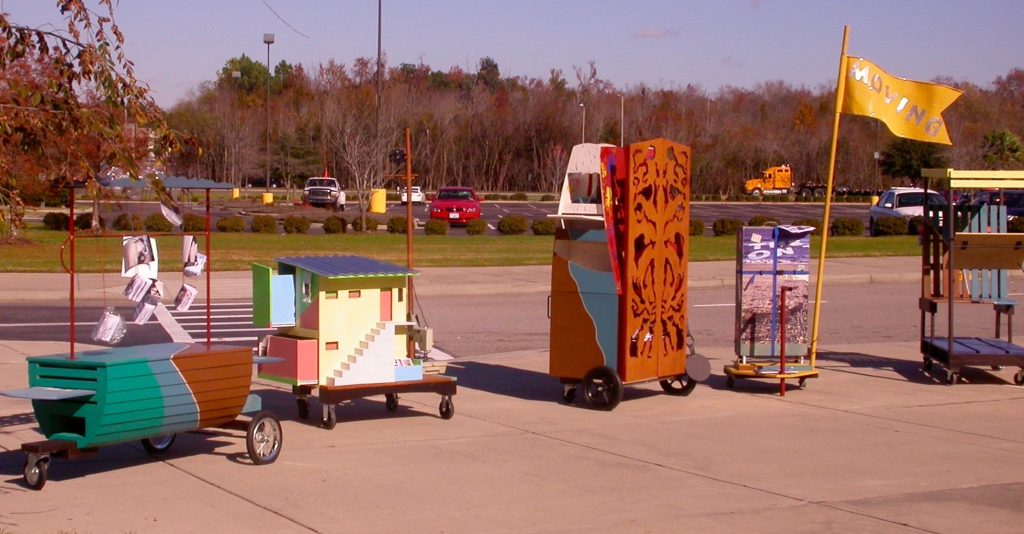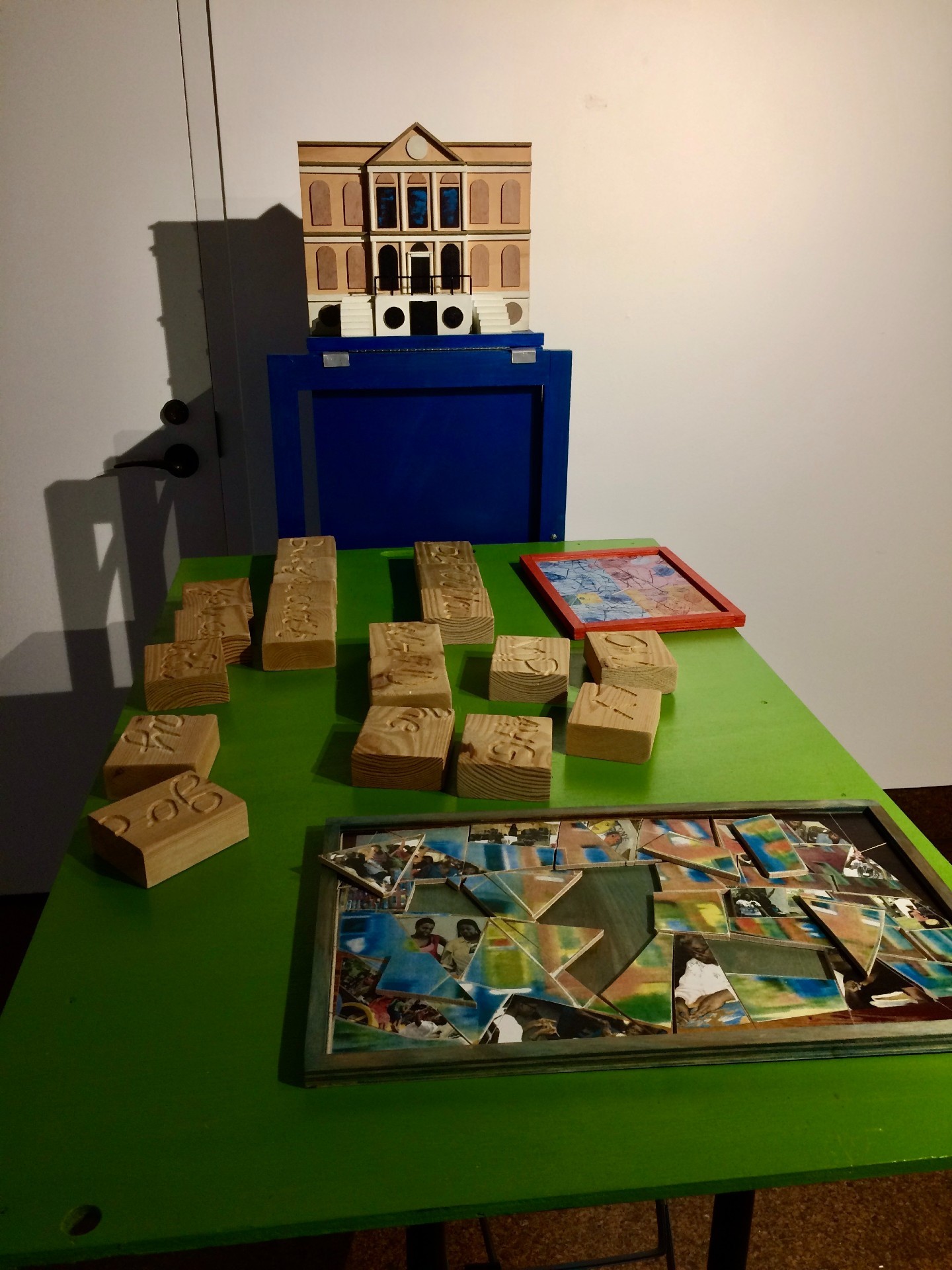Ensemble 10
Performing? . . . Un Grand Monde?
2011-2020
Each drawing: 60"x40"
Tableau: 75"x156"x2"
Blocks after blocks of barely standing façades, in West Baltimore – a war zone – the exemplification of an urban tragedy. It cannot fail to touch you at the core, when you understand that no world war was fought here recently. This has to be repeated in whatever medium we have on hand. It is clear to many of us that it is a civil war which is being fought here. Call it a class war, an economic war, a race war historically rooted war; the book is open for all to read and learn from.
The large colorful puzzle of façades was used in two performances during ROOTSfest (35th Anniversary of Alternate ROOTS in Baltimore): at the National Learning Exchange and at the Hidden Stream site along the Highway to Nowhere (aborted construction of I45).
In Baltimore the façades generated conversations, workshops and inspired large images, puzzles and backdrops. The ensuing performances of CONVERSATIONS WITH TIME attempted to present the journey of the program, as a rehearsal in real time, more than a straight documentation.
They were led by Theresa Cunningham, Omari Fox and Gwylene Gallimard with doris davenport, Domonica Covington, Taye Beasley, James Harris, Jean-Marie Mauclet, Ms Jean and Carolyn Myers. Partners and/or performers included members of the Bon Secours Senior program and GED program, the Harlem Middle School Student Government and the Charleston Rhizome Collective.
For CONVERSATIONS WITH TIME #2 a year later, at the Alternate ROOTSweek in the chapel of Lutheridge Camp in Arden NC, a visual confrontation was installed between a mended canvas of Baltimore façades designed as a giant puzzle and the fragile glass representation of a Pittsburgh post-modern Green Building fabricated during a residency at the Pittsburgh Glass Art Center.
To reinforce the energizing function of the new amid ruins, the Green Building also became a ‘neighborhood store’ carrying smaller versions of the Baltimore puzzles, a repository for the future.
CONVERSATIONS WITH TIME #2 revives the tools/materials used in the original Bmore project, and words – heard or seen there. Booklets of dialogues which generated the content of workshops and two scripts could be studied. As a memorialization of many intense and emotional moments, the mending of the façades shows at the same time everybody’s hopes to heal inter-generational relationships and regrets that Charleston be far from Baltimore. It speaks of all the people who participated as being so intimately – although so temporarily – West Baltimoreans.
The lead artists wanted the piece to appear as a staged painting. It suggested a silent performance. It became a “tableau vivant.” There was a twist to it though. The originally silent actors (Jean -Marie Mauclet, Phinias Chirubvu, Dan Brawley, Omari Fox, Keryl McCord, Gwylene Gallimard) came to life one by one with a question. The audience was to answer. Answers were recorded by Jonell Logan and her email is in the booklet attached to Ensemble 10.
<<
1st QUESTION- This is a work-in-progress.
Can it become a memorial to a past event, at the same time as a platform for further changes?
2nd QUESTION- I did not go to West Baltimore.
So I would like to know if you think that this piece creates the presence of the work?
And the title fits it?
3rd QUESTION- How does my presence as a silent actor impact your perception of the piece?
4th QUESTION- West Baltimore has liquor stores, guns, etc. at every corner, all sanctioned by the government. What is your position on that politicized statement? (The question was actually re-formulated as a spoken word poem by Omari Fox)
5th QUESTION- If one makes an art piece with or inspired by a community, who owns the art and gets money when it is sold?
6th QUESTION- Conversations with Time’s first audience was the participants. You are our/ my second audience and that piece has been modified/re-created for you. Since I/we trust you, tell me/us what you don’t like about the piece?
>>
It took four years of exchanges and shared practices with JEMAGWGA before Sharda & Sunanda of the Arpan Cooperative (India) part of a Fair Trade organization, Phinias Chirubvu (Zimbabwe/South Africa), Omari Fox (USA), Aurore Gruel (France), Arianne King Comer (USA), Wok Marcia Kure (Nigeria/USA), Rajni Shah (USA/England), Delphine Ziegler (France) finally met in Charleston for The Future is on the Table #3!
Carts visualize the exchanges with commitment, brainwork,
skills.
They are reciprocal gifts which became movable storage, workspaces, display racks, depositories, a podium. All were shown at the Gibbes Museum and also shown in North Charleston. People were encouraged to explore the carts, even to discover or leave some intimate messages.
All were gifted to participants.
Later on, the Arpan cart, a representation of their Thane (2 hours from Mumbaï) building ended up in Chicago and possibly India. As far as we know, most of the other carts have been reused, given away, repurposed, or dismantled.
We like to echo the Another World is Possible of the Social Forum movement with Another Culture is possible, Other Art Practices are possible. Exploring in/with Community is therefore necessary.
